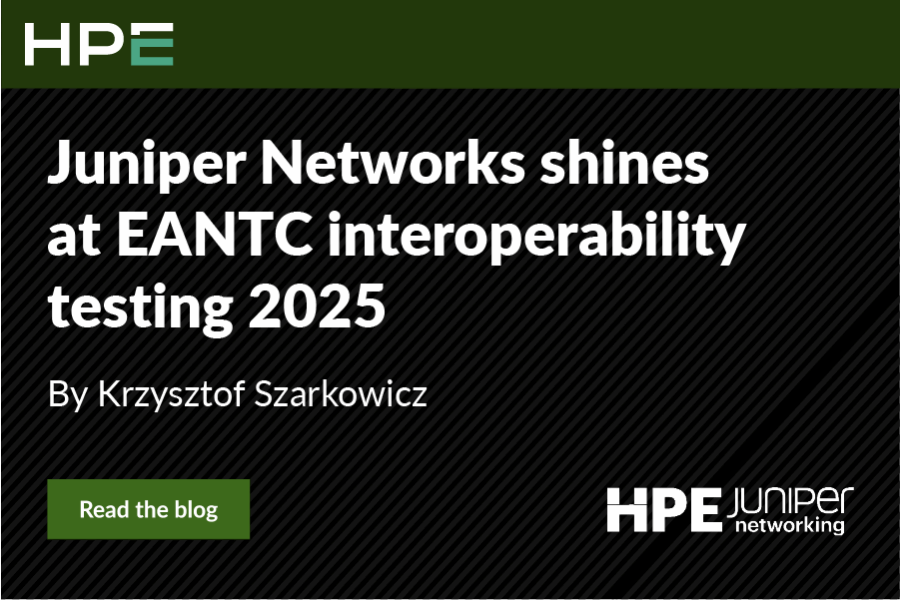Data center downtime can result in significant disruption to business, leading to lost productivity and revenue while damaging your company’s image. In today’s competitive digital landscape, you need to ensure maximum application availability along with optimal performance. With so much at stake, reducing Mean Time To Resolution (MTTR) is crucial and the right way to approach it goes beyond temporary fixes — addressing the root cause is key.
Cloud applications and virtualized networks, along with an explosion of apps have made networks more complex to manage, with prevention and remediation easier said than done. There are thousands of processes occurring through different layers of the network at any given time, each with the potential to cause an issue. A network operator simply can’t follow all of these pieces fast enough to effectively manage the network. So, how do we go about tackling this challenge efficiently?
Intent-Based Analytics (IBA), an emerging technology that uses a deeper level of intelligence, has proven to be of incredible help in running efficient and resilient networks. By using real-time telemetry and analytics, IBA offers unparalleled visibility into the network, which results in more informed decisions and better business outcomes.
How can IBA reduce MTTR?
An important problem that IBA addresses is visibility into the network — the data that your network generates is only as useful as the insights and patterns you can extract from it. You could have all the data in the world, but it is irrelevant without actionable insights that optimize network operations and improve security. IBA monitors network traffic and identifies anomalies in real time to help operators take corrective actions based on the underlying intent. It also aids in finding and addressing the root cause of an issue, making the network more robust.
Take optics as an example. In a typical data center, you’re swimming in an ocean of Small Form-Factor Pluggables (SFPs). Finding the failed ones is easy, but how do you find the degraded ones? Conducting inspections and manual testing is an exercise in patience, and in a world where intent-based networking (IBN) exists, certainly not the most efficient way of going about it. A proficient IBN tool would help proactively probe optical degradation issues and alert the operators before it snowballs into a major outage.
The core strength of IBA is its ability to help identify network drift. Once a network operator provides the intent, or desired outcome, with a design blueprint, the system converts those objectives into the configurations necessary to achieve them. It then continuously validates the intent by comparing the data collected against the ideal state and notifies the operator in real-time if it detects any abnormality.
With a system designed to effectively analyze and address network anomalies and offer insights into how the network is performing, IBA is an effective way to reduce MTTR.
Juniper Apstra: Intent-based networking for everyday data center operations
Juniper Apstra is a pioneer in intent-based networking that leverages IBA to automate management tasks across the lifecycle of a data center network, empowering you to move more decisively with greater business agility. Our customers have achieved 70% faster MTTR, along with a typical overall 320% Return on Investment (ROI) and payback time of fewer than six months.
Here are a few ways Juniper Apstra can help you reduce MTTR:
- No more CLI – Apstra not only simplifies the mundane day-to-day operations but also increases reliability by removing error prone and complex Command-Line Interface (CLI) configuration. It provides a robust point-and-click User Interface (UI) for configuration and also has an option to utilize a programmatic interface to automate and orchestrate your services and networks at scale.
- Multivendor support – If your data center utilizes equipment from multiple vendors, managing and troubleshooting them separately can lead to delays in identifying and resolving issues. Juniper Apstra, the only true multivendor fabric management solution, provides centralized monitoring and control of the network, highly simplifying the troubleshooting process and resulting in faster resolution times.
- Time Voyager – A network change can cause unexpected issues and it could take hours to zero in on the problem and roll back the commit. Juniper Apstra’s Time Voyager saves you that effort and lets you roll back to a previous network state with just a few clicks, giving you the confidence to make changes even on a Friday evening.
At Juniper, Experience-First Networking guides everything we do and Apstra is a testament to that. If you want to learn more about how intent-based analytics can help achieve low MTTR, be sure to catch our on-demand webinar here.

























